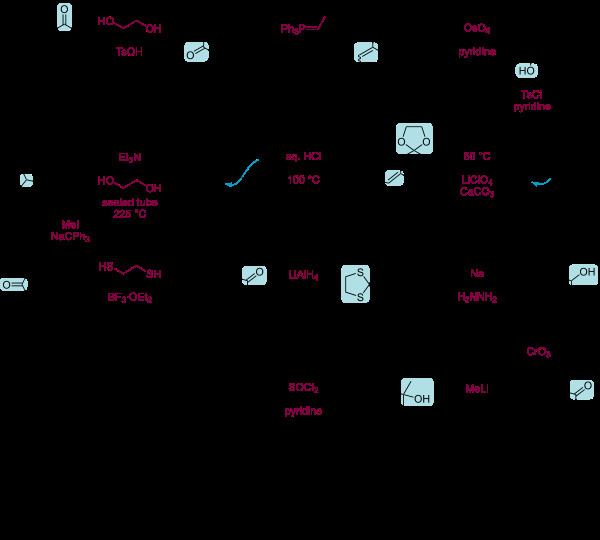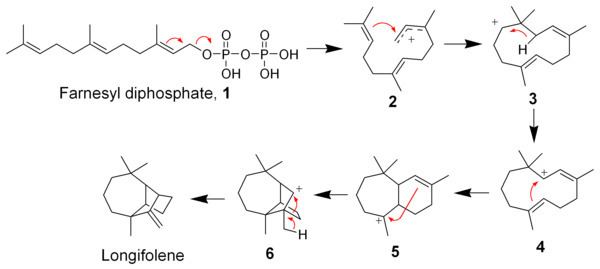Formula C15H24 Density 928 kg/m³ | Molar mass 204.36 g/mol Boiling point 254 °C | |
 | ||
Longifolene is the common (or trivial) chemical name of a naturally occurring, oily liquid hydrocarbon found primarily in the high-boiling fraction of certain pine resins. The name is derived from that of a pine species from which the compound was isolated, Pinus longifolia (obsolete name for Pinus roxburghii Sarg.)
Contents

Chemically, longifolene is a tricyclic sesquiterpene. This molecule is chiral, and the enantiomer commonly found in pines and other higher plants exhibits a positive optical rotation of +42.73°. The other enantiomer (optical rotation −42.73°) is found in small amounts in certain fungi and liverworts.

Longifolene is used in organic synthesis for the preparation of dilongifolylborane, a chiral hydroborating agent.
Longifolene is also one of two most abundant aroma constituents of lapsang souchong tea, because the tea is smoked over pine fires.

Total syntheses

Due to the compact tricyclic structure and lack of functional groups, Longifolene is an attractive target for research groups highlighting new synthetic methodologies. Notable syntheses are by Corey, McMurray, Johnson,< Oppolzer, and Schultz. Fallis has publised a stereoselective synthesis of (+)-longifolene using an intramolecular Diels-Alder strategy.
The Johnson biosynthesis has since been validated as feasible using modern quantum mechanical computational methods. The subsequent cationic cascade mechanism has been shown to go through a non-classical cation intermediate.
Biosynthesis
The biosynthesis of longifolene begins with farnesyl diphosphate (1) (also called farnesyl pyrophosphate) by means of a cationic polycyclization cascade. Loss of the pyrophosphate group and cyclization by the distal alkene gives intermediate 3, which by means of a 1,3-hydride shift gives intermediate 4. After two additional cyclizations, intermediate 6 produces longifolene by a 1,2-alkyl migration.
Use
The borane derivative dilongifolylborane is used in organic synthesis as a chiral hydroborating agent.
